|
Greece
Athens
The Acropolis
†
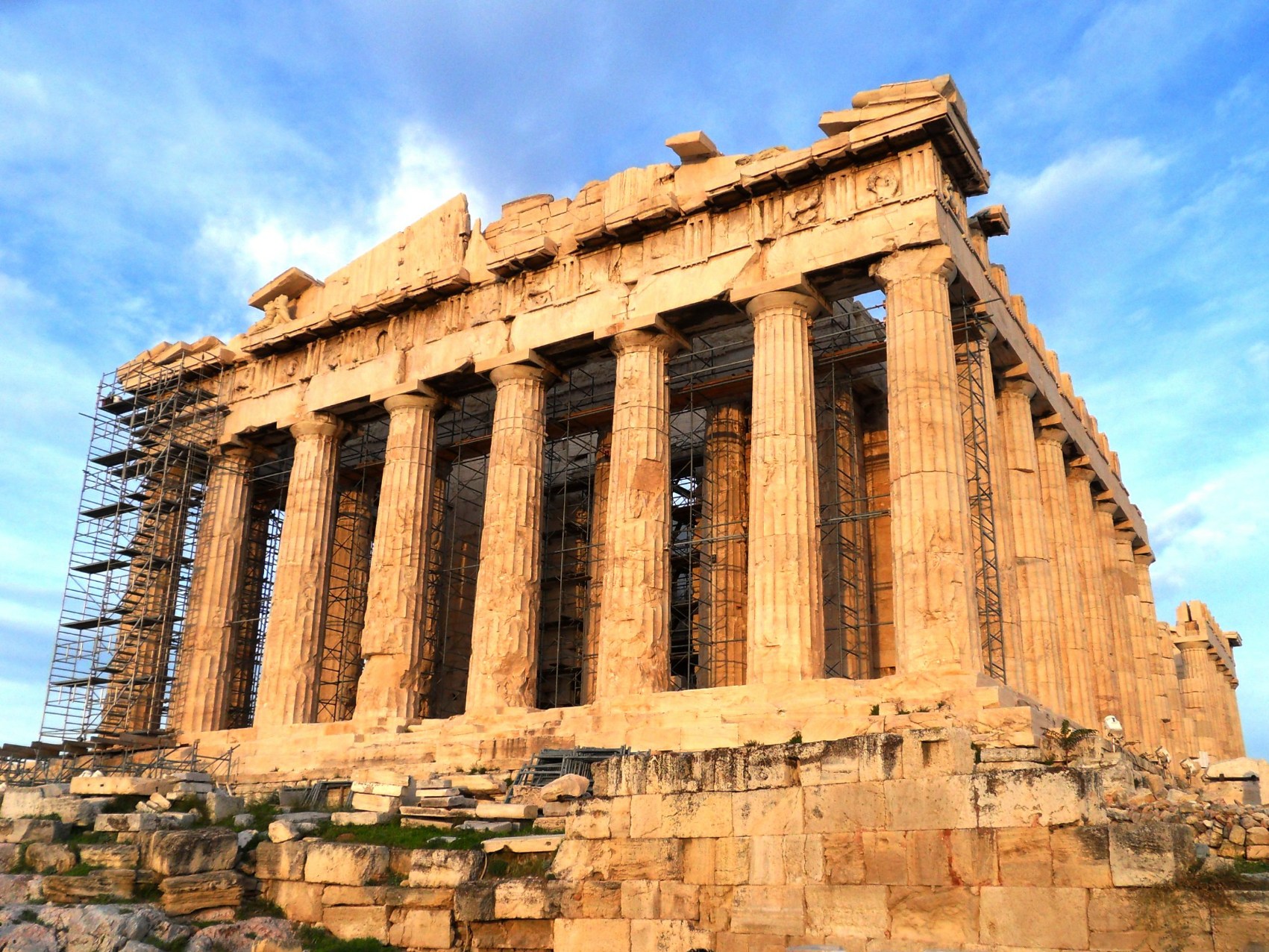 The Acropolis is not a single building but a number of temples built on a hill overlooking Athens. Although there are many Acropolises (the word meaning high city) in Greece we tend to associate the name with the one in Athens. The buildings that survive today are the Parthenon built between, 447 Ė 438 BC - although the decorative features werenít completed until 432 BC; the Propylaea constructed around 437 BC; The Temple of Athena Nike between 427 BC and 423 BC; and the Erechtheum which was begun in 421 BC, although work ceased between 414 BC and 409 BC, and was completed in 407 BC. READ MORE The Acropolis is not a single building but a number of temples built on a hill overlooking Athens. Although there are many Acropolises (the word meaning high city) in Greece we tend to associate the name with the one in Athens. The buildings that survive today are the Parthenon built between, 447 Ė 438 BC - although the decorative features werenít completed until 432 BC; the Propylaea constructed around 437 BC; The Temple of Athena Nike between 427 BC and 423 BC; and the Erechtheum which was begun in 421 BC, although work ceased between 414 BC and 409 BC, and was completed in 407 BC. READ MORE
Corfu
Achilleion Palace
†
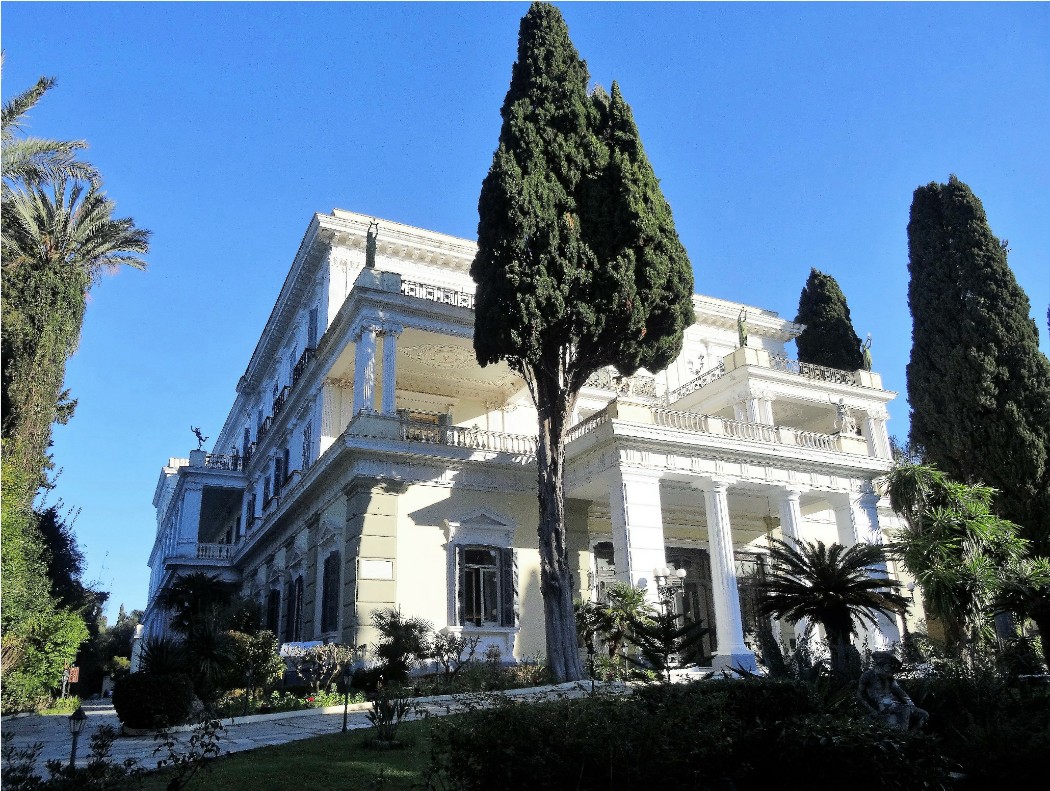 The Achilleion Palace is located on top of the hill in the Village of Gastouri, 10 kms southwest of the town of Corfu. Its positioning provides views over the surrounding countryside with its green hills and valleys and the Ionian Sea in the background. The Achilleion Palace is located on top of the hill in the Village of Gastouri, 10 kms southwest of the town of Corfu. Its positioning provides views over the surrounding countryside with its green hills and valleys and the Ionian Sea in the background.
The building was acquired by Empress Elizabeth (known as Sisi), of Austria, the wife of Emperor Franz Joseph I, from the philosopher and diplomat Petros Vrailas Armenis and was formerly known as "Villa Vraila". READ MORE
†
Fortress of Saint Mark (New Fortress)
†
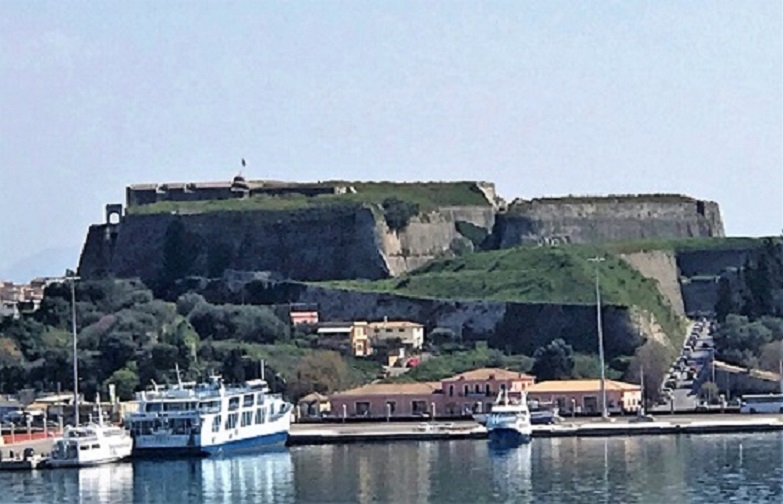 The Fortress of Saint Mark in Corfu is better known as the New Fortress. It was built following the siege of the Ottoman Emperor Suleiman the Magnificent in 1537. Construction was carried out under the supervision of an Italian military engineer commencing in 1577 but the fortress was completed as it is today by the British who ruled Corfu from 1815 to 1863. READ MORE The Fortress of Saint Mark in Corfu is better known as the New Fortress. It was built following the siege of the Ottoman Emperor Suleiman the Magnificent in 1537. Construction was carried out under the supervision of an Italian military engineer commencing in 1577 but the fortress was completed as it is today by the British who ruled Corfu from 1815 to 1863. READ MORE
†
Corinth
Ancient Corinth Archaeological Site
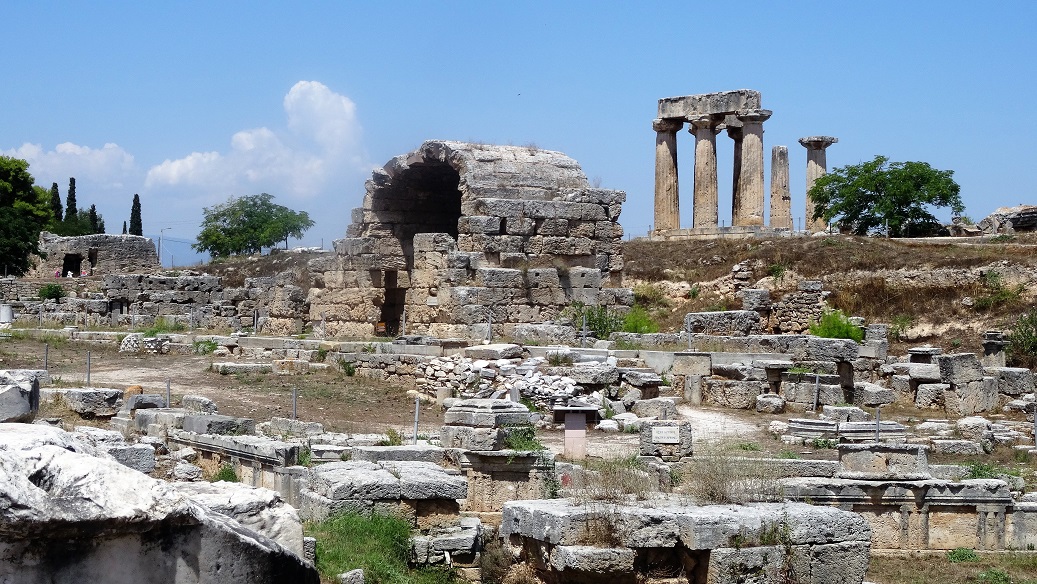 Ancient Corinth was a major Greek city in ancient times. It allied itself with Sparta against Athens and contributed to the war against Persia. In 146 BC it was sacked by the Romans which left the city virtually uninhabited until 44 BC when Julius Caesar founded a colony at the site. By the 1st century AD, Corinth had become an important administrative and trade centre and was the provincial capital of Greece. Around 50 AD Saint Paul visited Corinth and spent 18 months in the city. Its decline started in the 3rd century AD, although it was occupied by a number of foreign powers until 1858 when the city was destroyed by an earthquake. READ MORE Ancient Corinth was a major Greek city in ancient times. It allied itself with Sparta against Athens and contributed to the war against Persia. In 146 BC it was sacked by the Romans which left the city virtually uninhabited until 44 BC when Julius Caesar founded a colony at the site. By the 1st century AD, Corinth had become an important administrative and trade centre and was the provincial capital of Greece. Around 50 AD Saint Paul visited Corinth and spent 18 months in the city. Its decline started in the 3rd century AD, although it was occupied by a number of foreign powers until 1858 when the city was destroyed by an earthquake. READ MORE
†
Crete
Palace of Knossos
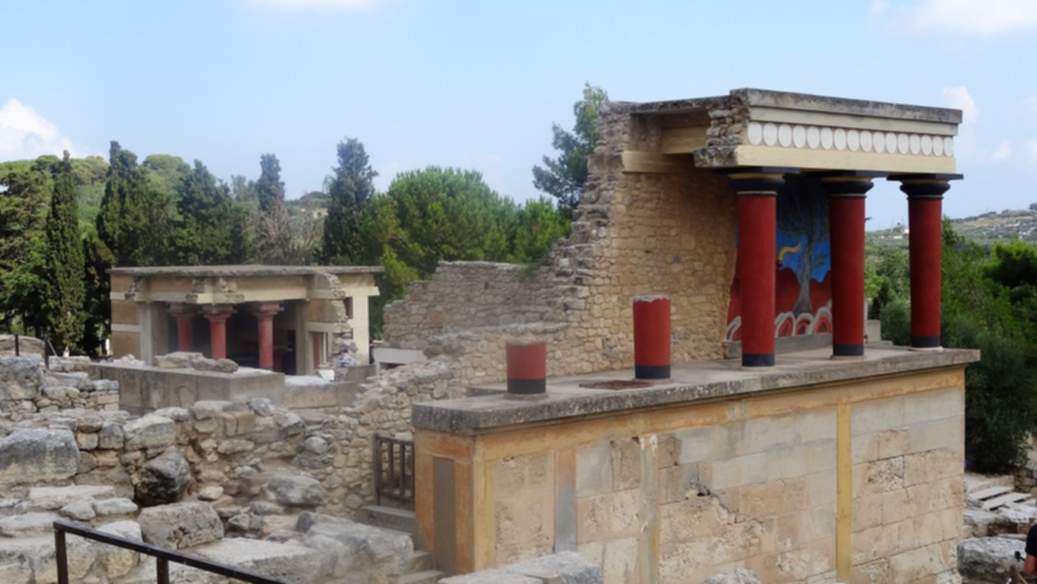 The Palace of Knossos was the centre of the Minoan civilization and the fabled home of King Minos and the Minotaur, which was contained in the labyrinth below the palace. Knossos developed during the Neolithic period (7000-3000 BC) and was a major centre of trade during the period 3000-1900 BC when the first Palace was constructed. The site was excavated and reconstructed during the 20th century, although the work carried out has been subject to criticism. READ MORE The Palace of Knossos was the centre of the Minoan civilization and the fabled home of King Minos and the Minotaur, which was contained in the labyrinth below the palace. Knossos developed during the Neolithic period (7000-3000 BC) and was a major centre of trade during the period 3000-1900 BC when the first Palace was constructed. The site was excavated and reconstructed during the 20th century, although the work carried out has been subject to criticism. READ MORE
†
Agia Triada Monastery
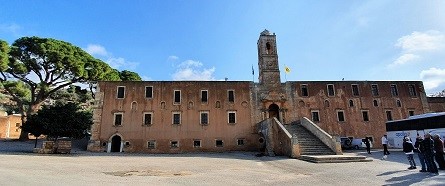 Agia Triada Monastery was built in the 17th century but destroyed during the Greek War of Independence fought against the Turks in the 1820s. It was later rebuilt and became one of the most significant monastic complexes in Crete. Today it is open to tourists and houses a museum and a shop that sells olive oil and wine produced by the monks. READ MORE Agia Triada Monastery was built in the 17th century but destroyed during the Greek War of Independence fought against the Turks in the 1820s. It was later rebuilt and became one of the most significant monastic complexes in Crete. Today it is open to tourists and houses a museum and a shop that sells olive oil and wine produced by the monks. READ MORE
†
Delos
Delos Archaeological Site
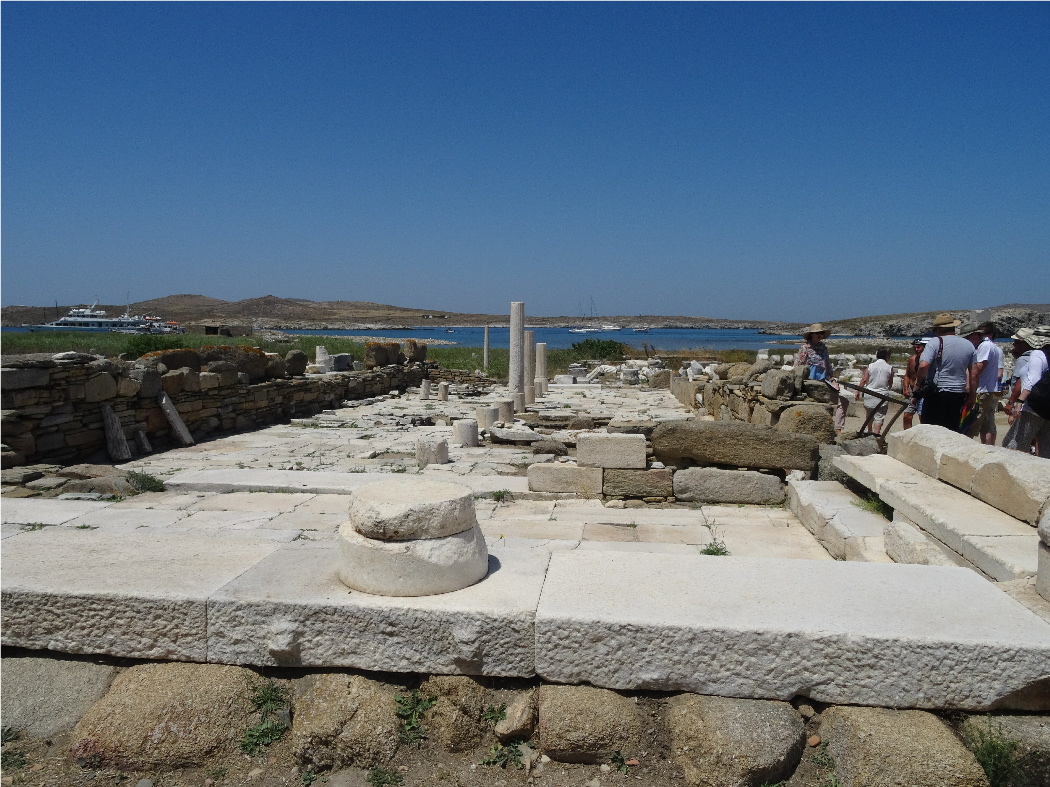 Located two miles from the island of Mykonos is the small, barren island of Delos, five square km in size, and originally known as Ortygia (Quail Island). It contains an archaeological site which, according to Greek mythology, was the birthplace of the god Apollo and his twin sister Artemis. These were the children of Zeus by his mistress, Leto. Zeusís jealous wife, Hera, banished Leto from Earth but she was given sanctuary on Delos by Poseidon, where she gave birth to the twins. READ MORE Located two miles from the island of Mykonos is the small, barren island of Delos, five square km in size, and originally known as Ortygia (Quail Island). It contains an archaeological site which, according to Greek mythology, was the birthplace of the god Apollo and his twin sister Artemis. These were the children of Zeus by his mistress, Leto. Zeusís jealous wife, Hera, banished Leto from Earth but she was given sanctuary on Delos by Poseidon, where she gave birth to the twins. READ MORE
†
Delphi
Delphi Archaeological Site
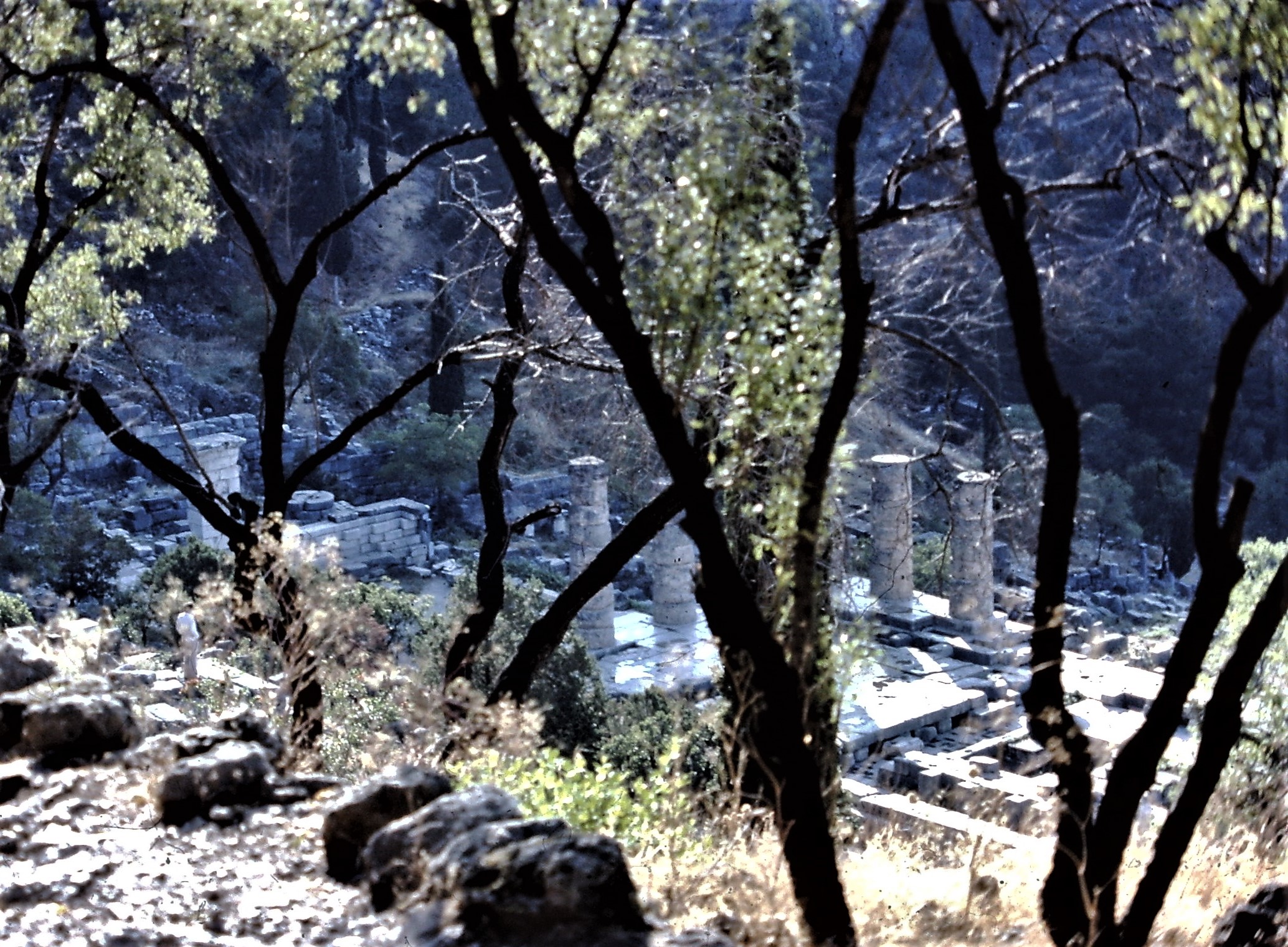 Famous throughout the ancient world for its Oracle, the High Priestess Pythia, and her predictions of the future, the site of Delphi is located in the Peloponnese and was regarded by the Greeks as the very centre of the world. According to Greek mythology, it was the place where two eagles met after being sent out by Zeus to find the navel of the world. READ MORE Famous throughout the ancient world for its Oracle, the High Priestess Pythia, and her predictions of the future, the site of Delphi is located in the Peloponnese and was regarded by the Greeks as the very centre of the world. According to Greek mythology, it was the place where two eagles met after being sent out by Zeus to find the navel of the world. READ MORE
†
†
Olympia
Olympia Archaeological Site
†
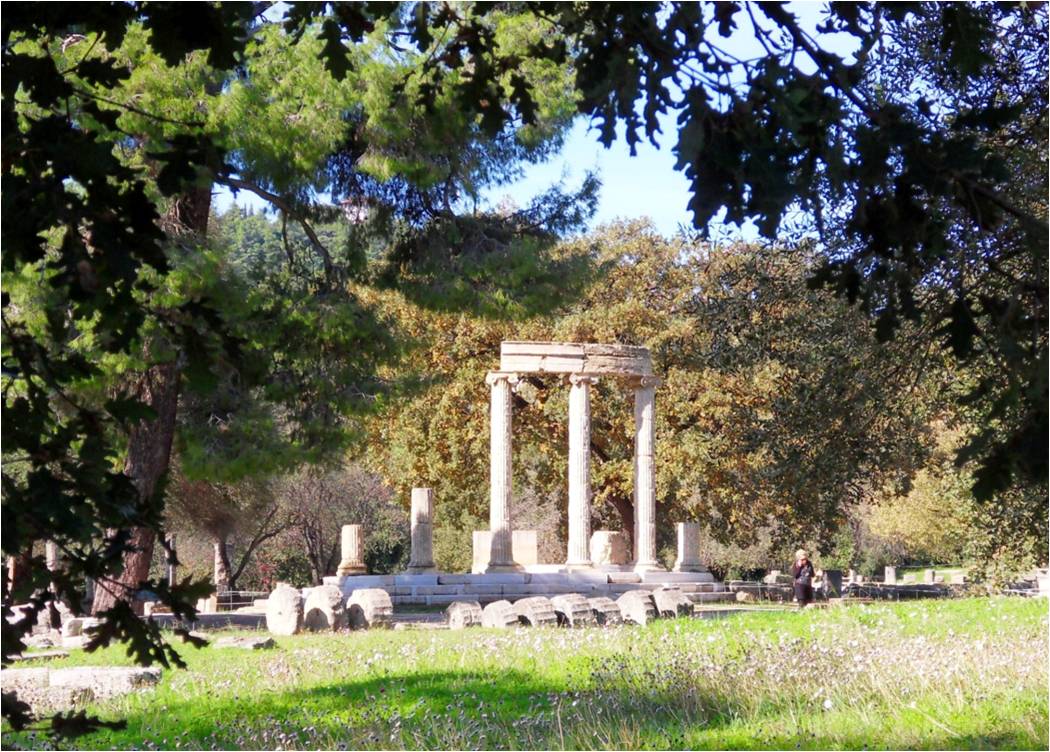 Olympia was one of the most important sanctuaries of ancient Greece although we know it as the birthplace of the Olympic Games. There are a number of different versions of how the Olympic Games began. One puts it down as the place where Zeus overcame his father Cronus and seized the throne. It thus became a sacred place to Zeus and he created the games to celebrate his victory. The first recorded Olympic Games took place in 776 BC although they may have started earlier. At that time there was just one event, a foot race over a stade, a distance of 180 metres. READ MORE Olympia was one of the most important sanctuaries of ancient Greece although we know it as the birthplace of the Olympic Games. There are a number of different versions of how the Olympic Games began. One puts it down as the place where Zeus overcame his father Cronus and seized the throne. It thus became a sacred place to Zeus and he created the games to celebrate his victory. The first recorded Olympic Games took place in 776 BC although they may have started earlier. At that time there was just one event, a foot race over a stade, a distance of 180 metres. READ MORE
†
Rhodes
Palace of the Grandmaster
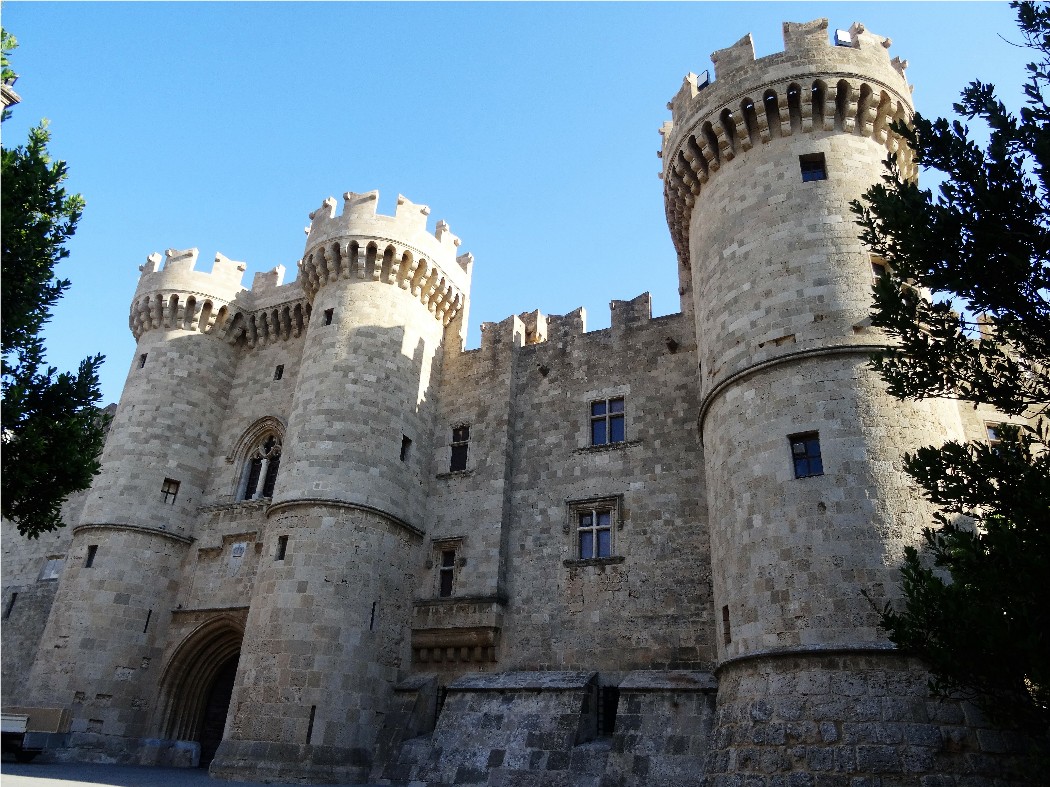 Built on the highest point of the medieval city in Rhodes, the Palace of the Grandmaster dominates the city and the harbour. It played a major role in the defence of the city beginning in the 7th century when it was first constructed on the site of the Byzantine citadel of Rhodes and on the foundations of the Temple of the Sun God (Helios), whose cult was widespread in Rhodes in antiquity. The citadelís strong fortifications provided the last refuge for the population in the event of the city falling to the enemy. READ MORE Built on the highest point of the medieval city in Rhodes, the Palace of the Grandmaster dominates the city and the harbour. It played a major role in the defence of the city beginning in the 7th century when it was first constructed on the site of the Byzantine citadel of Rhodes and on the foundations of the Temple of the Sun God (Helios), whose cult was widespread in Rhodes in antiquity. The citadelís strong fortifications provided the last refuge for the population in the event of the city falling to the enemy. READ MORE
†
Archaeological Museum
†
 The Archaeological Museum of Rhodes is housed in the building that was the hospital of the Knights of Saint John known as the Knights Hospitallers. Construction of the hospital began in 1440 and was completed in 1489. It was carried out over the remains of a Roman building. The Museum contains a number of collections of archaeological artifacts from various parts of Rhodes and the neighbouring islands. These include burial finds dating back to the 9th century BC, and sculptures and mosaic floors from the classical, Hellenistic, and Roman periods. One of the famous pieces contained in the museum is the marble statue dating from the first century BC of Aphrodite Bathing. READ MORE The Archaeological Museum of Rhodes is housed in the building that was the hospital of the Knights of Saint John known as the Knights Hospitallers. Construction of the hospital began in 1440 and was completed in 1489. It was carried out over the remains of a Roman building. The Museum contains a number of collections of archaeological artifacts from various parts of Rhodes and the neighbouring islands. These include burial finds dating back to the 9th century BC, and sculptures and mosaic floors from the classical, Hellenistic, and Roman periods. One of the famous pieces contained in the museum is the marble statue dating from the first century BC of Aphrodite Bathing. READ MORE
†
Santorini
Akrotiri Archaeological Site

The Archaeological site of Akrotiri is a Minoan Bronze Age settlement that was buried by the volcanic eruption of Thira in 1627 BC. Because it was buried under volcanic ash it was preserved until it was rediscovered in the 20th century. READ MORE
†
|



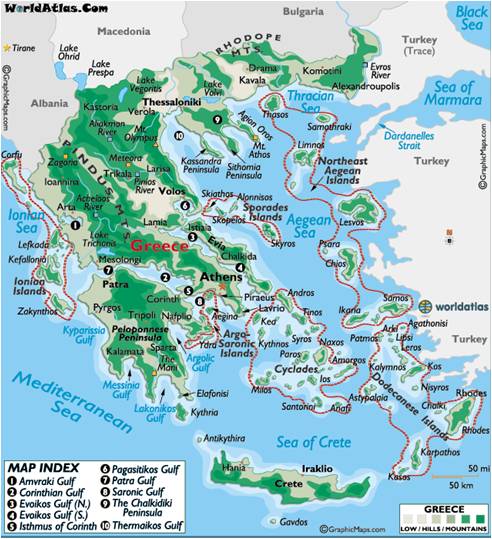
 The Acropolis is not a single building but a number of temples built on a hill overlooking Athens. Although there are many Acropolises (the word meaning high city) in Greece we tend to associate the name with the one in Athens. The buildings that survive today are the Parthenon built between, 447 Ė 438 BC - although the decorative features werenít completed until 432 BC; the Propylaea constructed around 437 BC; The Temple of Athena Nike between 427 BC and 423 BC; and the Erechtheum which was begun in 421 BC, although work ceased between 414 BC and 409 BC, and was completed in 407 BC.
The Acropolis is not a single building but a number of temples built on a hill overlooking Athens. Although there are many Acropolises (the word meaning high city) in Greece we tend to associate the name with the one in Athens. The buildings that survive today are the Parthenon built between, 447 Ė 438 BC - although the decorative features werenít completed until 432 BC; the Propylaea constructed around 437 BC; The Temple of Athena Nike between 427 BC and 423 BC; and the Erechtheum which was begun in 421 BC, although work ceased between 414 BC and 409 BC, and was completed in 407 BC. 

 Located two miles from the island of Mykonos is the small, barren island of Delos, five square km in size, and originally known as Ortygia (Quail Island). It contains an archaeological site which, according to Greek mythology, was the birthplace of the god Apollo and his twin sister Artemis. These were the children of Zeus by his mistress, Leto. Zeusís jealous wife, Hera, banished Leto from Earth but she was given sanctuary on Delos by Poseidon, where she gave birth to the twins.
Located two miles from the island of Mykonos is the small, barren island of Delos, five square km in size, and originally known as Ortygia (Quail Island). It contains an archaeological site which, according to Greek mythology, was the birthplace of the god Apollo and his twin sister Artemis. These were the children of Zeus by his mistress, Leto. Zeusís jealous wife, Hera, banished Leto from Earth but she was given sanctuary on Delos by Poseidon, where she gave birth to the twins.  Olympia was one of the most important sanctuaries of ancient Greece although we know it as the birthplace of the Olympic Games. There are a number of different versions of how the Olympic Games began. One puts it down as the place where Zeus overcame his father Cronus and seized the throne. It thus became a sacred place to Zeus and he created the games to celebrate his victory. The first recorded Olympic Games took place in 776 BC although they may have started earlier. At that time there was just one event, a foot race over a stade, a distance of 180 metres.
Olympia was one of the most important sanctuaries of ancient Greece although we know it as the birthplace of the Olympic Games. There are a number of different versions of how the Olympic Games began. One puts it down as the place where Zeus overcame his father Cronus and seized the throne. It thus became a sacred place to Zeus and he created the games to celebrate his victory. The first recorded Olympic Games took place in 776 BC although they may have started earlier. At that time there was just one event, a foot race over a stade, a distance of 180 metres.